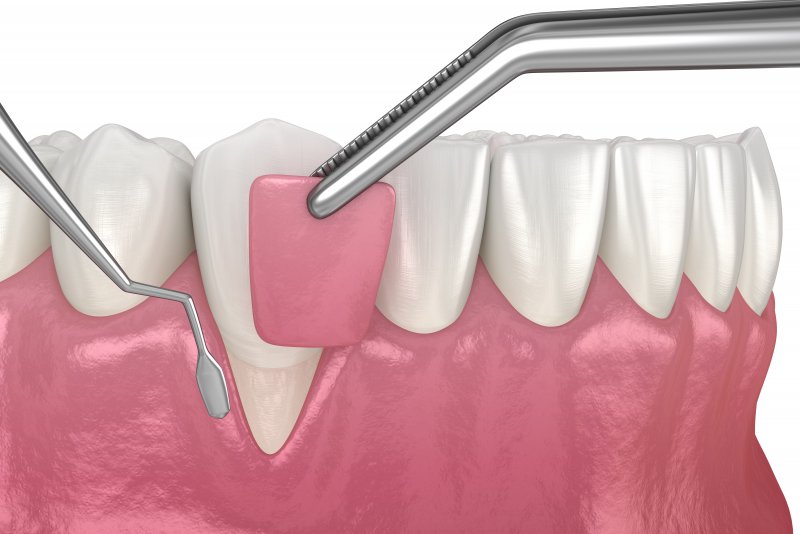
If you have gum issues but don’t have it treated, over time your symptoms will become more and more obvious. One good example is gum recession; as time goes on, your teeth can look unnaturally long and become easier for bacteria to attack the roots of your teeth. To correct the health issues and aesthetic drawbacks of gum recession, a gum grafting procedure may be performed as part of your therapy. The following post explores why this procedure is performed and how it works.
What is Recession?
Recession is when the root surface of the tooth, called the cementum, is exposed. The gum line moves higher up on the tooth making more of the tooth visible. It is typically caused by aggressive brushing or tooth malpositioning. However, there are other factors that can contribute to recession, including periodontal disease.
How Can You Tell if You Need Gum Grafting?
Your periodontist will need to examine your mouth to determine whether the procedure is truly necessary, but there are telltale symptoms that you can watch out for on your own as well. For example:
- You might notice that your teeth look longer than they used to.
- You may experience increased tooth sensitivity (meaning it hurts when the tooth touches something hot or cold).
- You see more redness and irritation of the tissues.
How Does Gum Grafting Work?
A small amount of tissue is obtained from somewhere in your mouth and is used to cover the areas of the root exposure. There are different types of gum grafts that might be performed, but the most common is a connective tissue graft, where the connective tissue is taken from the roof of your mouth to cover the exposed root surface and increase the tissue thickness in the area.
Gum grafting procedures are generally pain-free since your mouth is numbed first. However, post-operatively, you may experience some pain. The discomfort can be controlled with anti-inflammatory pain medication, and you should see improvements after a few days. You may need to adopt a soft food diet for at least a week to give the grafted site a chance to heal.


A gum graft isn’t always necessary, but sometimes it is an important step towards regaining your oral health. If you haven’t been diagnosed with gum recession yet but have noticed signs of gum recession, get in touch with a periodontist today to figure out what steps you might need to take to protect your smile.
About the Practice
Here at Pioneer Periodontics & Implant Dentistry, we make your smile our first priority. We make sure that our patients are fully informed of the risks of gum disease – including tooth loss – and we can recommend many different treatment options based on their needs, including gum grafts. To schedule a periodontal consultation at our Lincoln location, visit our website or call (402) 483-7631.
